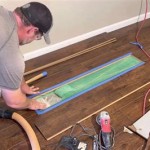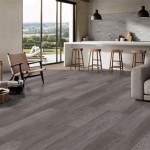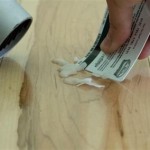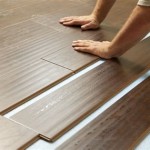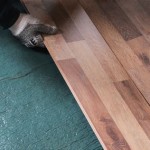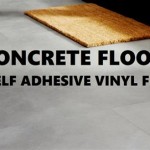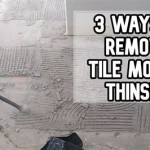Flooring Ideas For A Shed
Selecting the appropriate flooring for a shed is a crucial decision that significantly impacts its functionality, longevity, and overall utility. The floor is not merely a surface to stand on; it provides structural support, protects against moisture and pests, and contributes to the shed's ability to withstand environmental elements. Numerous factors should be considered when choosing shed flooring, including the intended use of the shed, the local climate, budget constraints, and the desired level of maintenance. Ignoring the importance of appropriate flooring can lead to premature deterioration of the shed structure, rendering it unusable or requiring costly repairs. Therefore, careful consideration and informed decision-making are essential when selecting the best flooring option for a specific shed.
The structural integrity of the shed floor is paramount. It needs to be able to bear the weight of its contents, whether that includes gardening tools, lawn equipment, workshop machinery, or storage items. The flooring material should be capable of resisting warping, cracking, and sagging under sustained load. Furthermore, moisture resistance is a key consideration. Sheds are often exposed to damp or humid conditions, which can promote the growth of mold and mildew, leading to rot and decay in the flooring. The chosen flooring should ideally be resistant to these issues or properly sealed to prevent water damage. Finally, durability and ease of maintenance are important factors that relate to the long-term cost-effectiveness of the flooring solution. A durable floor will withstand wear and tear, requiring less frequent repairs or replacement. Ease of maintenance translates to less time and effort spent cleaning and preserving the floor's condition.
Considerations Before Selecting Flooring Material
Before exploring specific flooring options, it is essential to thoroughly evaluate the specific needs and requirements of the shed. This involves a comprehensive assessment of several crucial factors. These factors directly influence the performance of the shed floor and ensure that it remains durable, functional, and aligned with its intended purpose.
The primary consideration is the intended use of the shed. A shed used solely for storing lightweight gardening tools will have different flooring requirements than a shed used as a workshop with heavy machinery. The weight and frequency of use will dictate the necessary load-bearing capacity and abrasion resistance of the flooring. For example, a workshop shed will require a stronger, more durable floor that can withstand the weight of equipment and potential impacts from dropped tools or materials. A storage shed, on the other hand, may prioritize moisture resistance and ease of cleaning.
The local climate plays a significant role in the performance of shed flooring. Regions with high humidity or frequent rainfall require flooring materials that are highly resistant to moisture damage. Temperature fluctuations can also affect flooring materials, causing them to expand and contract, leading to potential cracks or warping. In colder climates, the flooring material should be resistant to freezing and thawing cycles, which can cause premature deterioration. Considering these climatic variables will help in selecting a flooring material that can withstand the environmental challenges specific to the location.
Budget constraints almost always play a role in the selection process. Different flooring materials have varying costs associated with them, including the cost of the materials themselves, as well as the cost of installation. It is crucial to establish a realistic budget and explore flooring options that fall within that range. While it may be tempting to choose the cheapest option, it is important to consider the long-term costs of maintenance and potential replacement. Investing in a slightly more expensive, but more durable and long-lasting, flooring material can often be more cost-effective in the long run.
Finally, the level of desired maintenance should be considered. Some flooring materials require more maintenance than others. For example, wooden floors may require periodic sealing or staining to protect them from moisture damage, while concrete floors may require occasional cleaning and sealing to prevent staining. Individuals should assess their willingness and ability to perform the necessary maintenance tasks before selecting a flooring material. Choosing a low-maintenance option can save time and effort in the long run, while a high-maintenance option may require more consistent upkeep.
Common Shed Flooring Options and Their Properties
After considering the specific requirements and constraints, it is time to explore the different flooring options available for sheds. There are a variety of materials to choose from, each with its own set of advantages and disadvantages. Each option caters to different needs and priorities.
Concrete slabs are a popular and durable choice for shed flooring. They provide a solid, stable foundation that can withstand heavy loads. Concrete is also highly resistant to moisture, pests, and fire. The primary disadvantage of concrete is that it can be expensive to install, particularly if a professionally poured slab is required. Concrete is also a hard surface, which can be uncomfortable to stand on for extended periods. However, the durability and longevity of concrete make it a good investment for sheds that will be used frequently or for storing heavy equipment. A concrete slab requires proper reinforcement and should be installed with consideration for drainage to prevent water accumulation around the base of the shed.
Gravel and crushed stone are a more affordable alternative to concrete. These materials provide a stable, well-draining base for the shed. Gravel and crushed stone are relatively easy to install and do not require any specialized tools or equipment. However, they are not as durable as concrete and may require periodic replacement as they settle or shift. Gravel and crushed stone are also not ideal for sheds that will be used as workshops or for storing delicate items, as they can be dusty and difficult to clean. This option is best suited for sheds that require less structural support and are used primarily for storing outdoor equipment or gardening supplies, where the surface is less critical.
Wooden floors, typically constructed from plywood or oriented strand board (OSB), are a common choice for sheds. Wood provides a warm, comfortable surface to stand on and is relatively easy to work with. Wooden floors can be painted, stained, or sealed to customize their appearance and provide additional protection against moisture. However, wood is susceptible to moisture damage, rot, and pests. Proper sealing and maintenance are essential to prolong the life of a wooden floor. Wooden floors are generally less expensive than concrete, but they may not be as durable. The choice of wood, treatment, and installation details are critical for ensuring the longevity of wooden floors. Proper ventilation beneath the shed is important to prevent moisture build-up.
Plastic shed flooring, often in the form of interlocking tiles or grids, is becoming increasingly popular. These materials are lightweight, easy to install, and resistant to moisture, pests, and mold. Plastic flooring is also relatively inexpensive and requires little maintenance. However, plastic flooring may not be as durable as concrete or wood, and it may not be suitable for sheds that will be used for storing heavy equipment. Plastic flooring options often provide good drainage and ventilation, which helps to prevent moisture problems. Durability varies greatly depending on the type and quality of the plastic used.
Rubber flooring, typically in the form of mats or rolls, is a durable and comfortable option for shed flooring. Rubber is resistant to moisture, impacts, and chemicals. It is also easy to clean and provides good traction. Rubber flooring can be more expensive than other options, but it is a good choice for sheds that will be used as workshops or for storing equipment that may leak or spill. Rubber flooring also provides good sound absorption, which can be beneficial in a workshop setting. Different types of rubber flooring are available, ranging from recycled rubber to virgin rubber, with varying levels of durability and cost.
Installation Tips For Shed Flooring
Proper installation is critical for ensuring the effectiveness and longevity of any shed flooring material. Regardless of the material chosen, careful attention to detail during installation is essential for preventing problems such as moisture damage, structural instability, and premature deterioration.
Preparing the base is the first and most important step in the installation process. The base should be level, compacted, and well-draining. If installing a concrete slab, the base should be properly excavated and filled with gravel or crushed stone to provide a stable and well-draining foundation. For gravel or crushed stone flooring, the base should be compacted to create a firm surface. For wooden floors, the base should be level and well-ventilated to prevent moisture build-up. Inadequate base preparation can lead to settling, cracking, and other structural problems. It is always better to invest the time and effort in preparing a solid base than to cut corners at this stage.
Proper drainage is essential for preventing moisture damage to shed flooring. The site should be graded to ensure that water flows away from the shed. If installing a concrete slab, consider incorporating drainage channels or a slight slope to direct water away from the floor. For wooden floors, ensure that there is adequate ventilation beneath the shed to prevent moisture build-up. Proper drainage helps to prevent mold, mildew, and rot, which can significantly extend the life of the flooring. Even if the chosen flooring material is water-resistant, preventing standing water around the shed's base is always beneficial.
Sealing and protecting the flooring material is crucial for extending its lifespan. Concrete floors should be sealed to prevent staining and moisture damage. Wooden floors should be painted, stained, or sealed to protect them from moisture, pests, and UV rays. Plastic and rubber flooring may not require sealing, but it is important to follow the manufacturer's recommendations for cleaning and maintenance. Applying a sealant or protective coating can significantly improve the durability and appearance of the flooring. Regular inspections and maintenance, such as reapplying sealant or cleaning the floor, are necessary to maintain its condition over time.

G Floor Blog Pros And Cons Of 5 Popular Shed Coverings

Shed Flooring Ideas A Complete Guide

Flooring For Garden Shed Durable Waterproof Outdoor Options

Shed Flooring The Complete Guide Pro Builders

Stylish Floor Ideas For Your Shed Mersey Flooring

Shed Flooring The Complete Guide Pro Builders

22 Shed Floor Ideas For Durability And Easy Maintenance Lost At E Minor

Flooring For Garden Shed Durable Waterproof Outdoor Options

Shed Flooring Ideas A Complete Guide

How To Make A Shed Floor Strong And Durable
See Also
